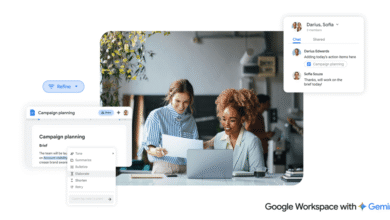Master Email Whitelisting: A Marketer’s Guide to Better Deliverability

▼ Summary
– A whitelisted email is a message from a trusted sender that bypasses spam filters to be delivered directly to the recipient’s inbox.
– As a recipient, you should whitelist trusted senders like family, businesses, or institutions to ensure their emails do not go to spam.
– As a marketer, you should ask subscribers to whitelist your sender address to help guarantee your emails reach their inbox instead of the spam folder.
– The process for whitelisting an email address varies by email client, with specific steps provided for platforms like Gmail, Outlook, and Yahoo.
– Beyond whitelisting, good email deliverability also depends on factors like message formatting, subscriber engagement, and low spam complaint rates.
Working in email marketing offers a unique advantage: we experience the channel from both sides of the equation. Sending campaigns provides one perspective, but receiving emails as a subscriber gives invaluable insight into what our audience encounters daily. This dual viewpoint is particularly useful when discussing the concept of whitelisting, which we’ll explore from the standpoints of both an email recipient and a marketer.
A recent personal experience highlights its importance. I was waiting for a purchase confirmation for a Sago palm I’d ordered online. The email was nowhere to be found in my primary inbox. Concerned about the order status, I checked my spam folder, and there it was. Since I plan to order from that merchant again, I immediately took steps to whitelist their email address, ensuring future messages land directly in my inbox.
So, what exactly is a whitelisted email? In simple terms, it’s an email from a sender that the recipient has explicitly marked as trusted. This action instructs the email service to bypass spam filters, guaranteeing delivery to the primary inbox.
Why should you, as a recipient, bother whitelisting emails? It ensures you consistently receive messages from people and organizations you value. This includes everything from family and friends to critical communications from schools, utility companies, newsletters, and businesses you frequently patronize. The process is generally straightforward, though the specific steps differ depending on your email client.
Now, let’s switch to the marketer’s perspective. For anyone sending email newsletters, especially paid subscriptions, landing in the spam folder is a significant problem. When it happens, subscribers often complain. Even the most brilliantly crafted subject line and compelling content become useless if the email never reaches the inbox. Images are blocked, links are disabled, and engagement plummets.
It’s crucial to understand that an email ending up in spam isn’t always the sender’s fault. You can follow all best practices, maintain a clean list, and have proper authentication in place, and it can still occur. However, proactively asking your subscribers to whitelist your email address is a powerful step toward improving deliverability. When a recipient adds you to their whitelist, it sends a strong positive signal to email algorithms, indicating trust and a desire to receive your communications.
How do you get subscribers to take this action? You must ask them. While less common today than in the past, incorporating a whitelist request into your onboarding process remains highly effective. This can be included on the sign-up confirmation page or within the welcome email. The request should clearly explain why whitelisting is important, specify the exact sender address to whitelist, and provide a link to simple instructions.
The wording can be adapted, but the core message should be consistent. Some organizations go a step further by including a brief, polite reminder in the footer of every email they send.
Here is a quick guide on how to whitelist an address across several popular email platforms.
In Gmail: Navigate to Settings > See all settings. Select the “Filters and Blocked Addresses” tab. Click “Create a new filter.” Enter the email address or domain (e.g., @yourcompany.com) in the “From” field. Click “Create filter,” check the box for “Never send it to Spam,” and confirm by clicking “Create filter” again.
In Outlook: Click the gear icon and go to View all Outlook settings. Select “Mail” followed by “Junk email.” Under “Safe senders and domains,” click “Add,” enter the email address or domain, and hit “Save.”
In Yahoo Mail: Go to Settings > More Settings. Choose “Filters” and click “Add new filters.” Name the filter, set the condition to “contains,” and input the email address. Select to move these messages to the “Inbox” and save your settings.
In AOL: The process involves adding the sender as a contact. Open “Contacts” from the left navigation pane, click “New Contact,” input the details, and save.
In Apple Mail: From the menu bar, select Mail > Preferences. Go to the “Rules” tab and click “Add Rule.” Provide a description like “Whitelist.” Set the condition to “From,” “contains,” and the email address. Choose the action “Move Message” to “Inbox” and click “OK.”
Whitelisting is just one component of a broader strategy known as email deliverability. It’s distinct from simple delivery rates, which only measure non-bounced emails. True deliverability means your messages consistently reach the inbox. Many factors influence this, including subscriber engagement, content quality, and formatting.
For instance, using too many different fonts can make an email look cluttered, harming readability and engagement. High engagement rates (opens and clicks) positively impact your sender reputation, which is far more critical than merely having a large list. A smaller, highly engaged list will almost always achieve better deliverability than a massive, disinterested one.
Mastering these concepts empowers you to ensure your important messages are seen. You now understand what whitelisting is, why it matters for both senders and receivers, how to request it from your audience, and the practical steps to implement it across major email platforms. Combining this knowledge with overall best practices paves the way for more successful and impactful email marketing.
(Source: HubSpot Marketing Blog)





